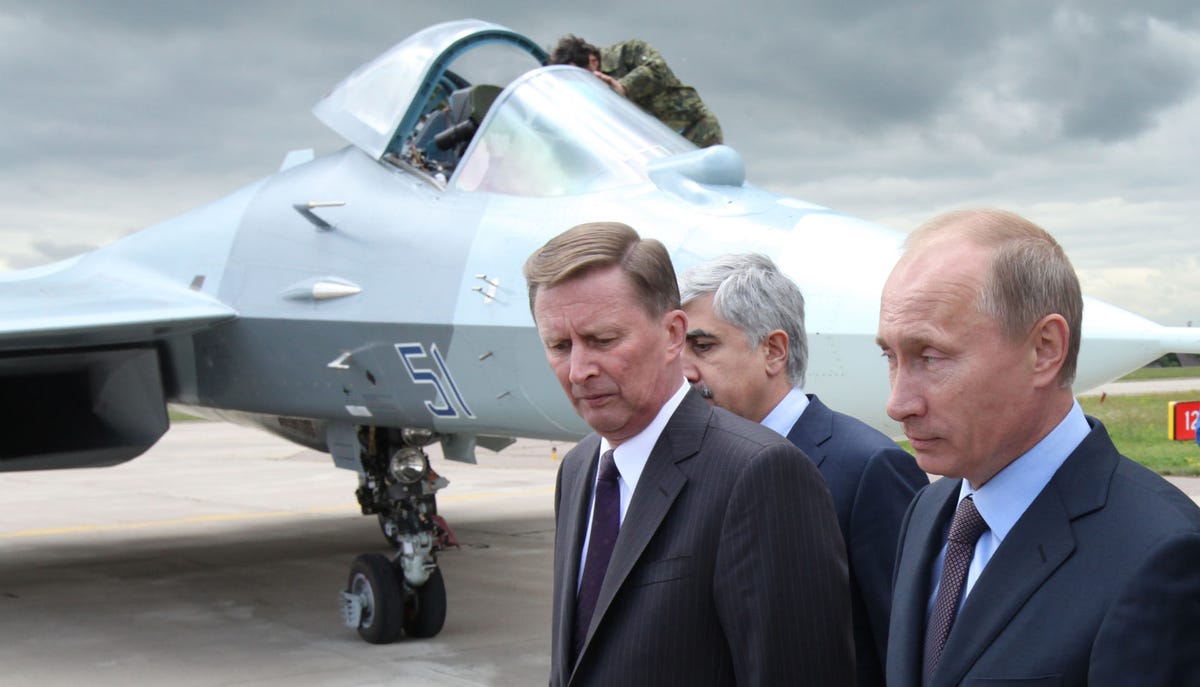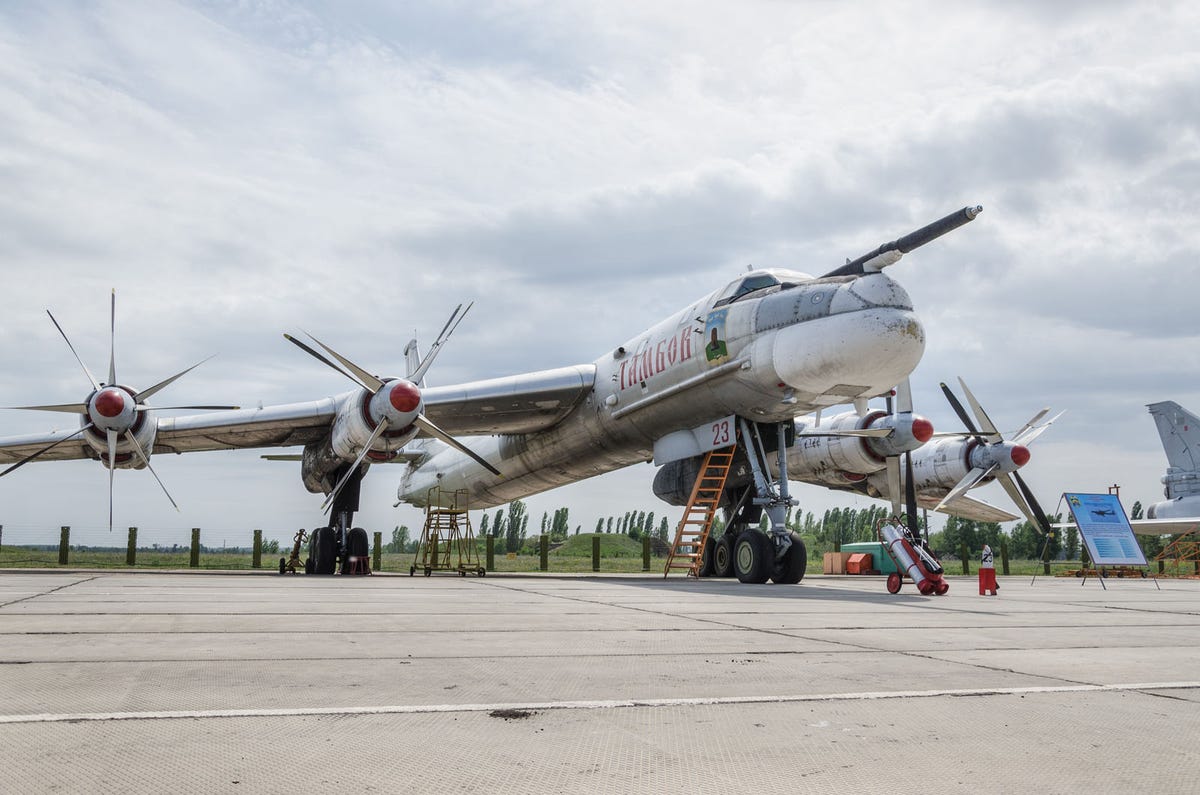Russia's deadliest new war machines
Russia is massively increasing its military spending. Here are the incredible new tanks, ships and more that the country has been spending all those rubles on.

Meet Russia's new generation of super weapons
Russia has dramatically increased its military spending on tanks, submarines and stealth planes. A report from the Stockholm International Peace Research Institute suggests Russian military has nearly doubled its spending since 2006.
Some of these new war machines have Western military experts shaken -- and for good reason. Here's everything you need to know about the fearsome new generation of war machines Russia will soon be rolling out onto the world scene.
T-14 Armata 'Super Tank'
Russia's new, largely automated T-14 Armata tank has Western military experts worried. That's because this so-called supertank has serious technological upgrades over the tanks currently in use by NATO.
"As a complete package, Armata certainly deserves its billing as the most revolutionary tank in a generation," according to a UK Ministry of Defence report leaked to the London Daily Telegraph in November 2016.
The T-14's high-tech advantage
The game-changing feature on the T-14 is its fully automated and unmanned turret, the first tank in operation to ever feature one. It allows the Armata to operate with a well-protected crew of three (as opposed to an M1 Abrams tank's more vulnerable crew of four), and opens up the possibility that it will, one day, be the first fully automated tank.
"For the crew, it's like playing a video game, taking some final moves and making decisions," the tank's deputy designer explained to the foreign media in 2015.
A cannon that puts NATO to shame
The T-14 Armata's main armament is its 2A82-1M 125 mm smoothbore cannon, capable of firing between 10 and 12 rounds per minute.
The tank's turret is designed to be replaced with a 154 mm cannon that, British intelligence worries, will "overmatch the guns and armor on existing NATO tanks."
The best protected tank ever
The tank also features the groundbreaking Afghanit active protection system (APS). It can intercept attacks that are incoming at speeds as high as Mach 5.0. The APS can also interfere with the targeting systems of anti-tank guided missiles, causing them to lose their target.
These systems are more advanced than those currently in use on American-built tanks.

An old bomber... with a deadly new secret
On April 17, 2017, the US military sent a pair of F-22 Raptors to intercept a Russian Tu-95 "Bear" bomber flying near the Alaskan coast. A second Tu-95 was spotted even closer to Alaska -- within 40 miles -- the next day. Rep. Adam Kinzinger (R-IL) characterized the flight as a "rejuvenation of the Cold War."
Though the Tu-95 dates back to 1952 (making it the only propeller-powered bomber still in use), it got a deadly new upgrade in 2015: 250-kiloton nuclear-tipped missiles.
Tu-95 and the largest bomb ever detonated
The Tu-95 is steeped in history: the bomber was responsible for dropping the Tsar Bomba in 1961, the most powerful thermonuclear device ever detonated. The hydrogen bomb's mushroom cloud reached 40 miles into the sky and completely leveled an abandoned village 34 miles from ground zero.
More recently, Russia has used the Tu-95 Bear to launch long-range (non-nuclear) air strikes against rebel targets in Syria.
The future of Russian fighters
Here, Russian Prime Minister Vladmir Putin inspects a 2010 prototype version of the Sukhoi PAK FA (T-50), an impressive new warplane currently in joint development with India.
The "Prospective Airborne Complex of Frontline Aviation" boasts stealth features, super-cruise, and super-maneuverability.
Supersonic and super-maneuverable
The T-50 is better equipped to handle sustained supersonic flight than any Russian plane built before it, with a supersonic range of 930 miles. (Its range increases to 2,175 at subsonic speed.)
The plane's life-support system, meanwhile, supports 9G maneuvers for up to 30 seconds. A VKK-17 partial pressure flight suit allows for the safe ejection of a T-50 pilot even at 14 miles above sea level.
Front-focused stealth
The tech on the T-50 is impressive. Composite materials account for a quarter of its body weight (and 70 percent of its surface), reducing its weight. The angles of each panel and joint have been carefully calculated to minimize its radar cross section, and a radar-absorbent material is used to make the plane that much harder to detect.
Of course, there's cool tech in the cockpit too...
Helmet-mounted sight
The cockpit of the T-50 holds a number of LCD displays. But pilots will get the most crucial information on the heads-up display built in to this NSTsI-V helmet-mounted sight and display unit.
The T-50 engine
The T-50 currently uses a pair of Saturn izdeliye 117 engines, capable of providing vectored thrust around all three of the plane's rotational axes.
This lets the plane to reach speeds of Mach 2.0 and perform some incredible, midair acrobatic feats, including Pugachev's Cobra (where a plane transitions from horizontal to vertical alignment and back without changing altitude).
T-50 models built after 2020 will use an even more powerful and efficient izdeliye 30 engine.
Can the US F-22 Raptor compete?
But how does the Russian PAK FA T-50 compare to the United States' F-22 Raptor stealth plane?
International affairs magazine The National Interest notes that the PAK FA has the advantage in maneuverability: Its three-dimensional vector-thrust engine bests the Raptor's two-dimensional engine. But the F-22 is a significantly stealthier plane, capable of carrying more missiles in its internal bays (six, versus the T-50's four).
Su-35S
Until the T-50 is ready to enter service, Russia's air force will rely heavily on its new single-seat, Su-35S "4++ generation" fighter. It's an upgraded descendant of the Su-27, with increased maneuverability, and a better engine for longer range.
The United States has definitely taken notice. "[The Su-35S is] a great airplane and very dangerous, especially if they make a lot of them," a senior US military official said.
Russia's weapon against ISIS
The Su-35S flew its first combat mission in January 2016, when four were deployed to the then-newly operational Khmeimim Air Base in Syria. The jets provide cover and scouting for other Russian planes.
Acrobatic maneuvers at the MAKS air show
The Su-35S displays its underside during an acrobatic maneuver at the 2015 MAKS international air show. The plane has 12 hardpoints that can carry laser-guided rockets and bombs, along with a wide range of missiles.
The plane has a top speed of Mach 2.25 (1,726 miles per hour) and a range of 3,600 kilometers (1,940 miles) at altitude.
The apocalypse on parade
Russia is updating its aging Cold War-era thermonuclear weapons with a new inventory of world-ending intercontinental ballistic missiles (ICBMs).
The RS-24 Yars, seen here in a 2015 Victory Day parade in Moscow, was first tested in 2007.
An ICBM in Red Square
Each 20.9-meter-long (68.6 feet) missile can carry up to 10 independently targetable, 150-250 kiloton warheads designed to defeat anti-missile defense systems.
The ICBM has a range of between 2,000 kilometers and 10,500 kilometers (1,240 miles and 6,520 miles). The individual warheads are accurate to 250 meters (820 feet).
An ICBM test launch
This photo is from an October 28, 2015 test of an RS-24 ICBM, launched from a silo in the Plesetsk State Test Cosmodrome.
Tests like these are conducted with dummy warheads... for obvious reasons.
Russia hides nukes underwater, too
Not all of Russia's nukes are mounted on trucks. As part of the country's nuclear triad -- and, again, to replace an aging Cold War stock -- a new generation of submarine-launched ballistic missiles (SLBMs) will soon be loaded onto a new generation of Borei-class nuclear subs, such as the Alexander Nevsky, seen here.
This is similar to how America hides its nuclear missiles under the sea.
The Alexander Nevsky in dry dock
As of December 2016, there are three submarines from the Borei class in active service, one in Russia's Northern fleet and two in Russia's Pacific fleet.
Russia hopes to have eight of the subs in active service by 2020.
Carrier of the Bulava
The Alexander Nevsky carries 16 of the country's new RSM-56 Bulava missiles, each with 10 independently targetable, 150-kiloton warheads.
Each missile has a range of roughly 8,000 kilometers (4,970 miles). Individual warheads are accurate to 350 meters (1,148 feet).
Mil Mi-28N 'Havoc'
This is a Mil Mi-28N "Havoc" attack helicopter, first delivered to the Russian army in 2006.
Russia is expected to test a new fifth-generation version of the vehicle, the Mi-28NM Night Hunter, sometime in 2017.
The Shipunov 2A42 autocannon
This is the main weapon on the Mi-28N, a 30 mm Shipunov 2A42 autocannon.
The cannon can fire as many as 800 rounds per minute, with an effective range of 1,500 meters (4,920 feet) for light-armored vehicles and 4,000 meters (13,100 feet) for squishier targets.
This helicopter is built to take out tanks
You'll find racks for eight Ataka (9M120, left) anti-tank guided missiles on each side of the Mi-28N. One missile packs the equivalent of 16 pounds of TNT.
The helicopter is also equipped with a pair of 2B-8 rocket pads (right), each capable of launching 20 S-8 rockets.
Mi-28NM: Even more upgrades
The upgraded Mi-28NM Night Hunter has a number of high-tech improvements over the existing Mi-28N here. It has 360-degree radar, anti-jamming tech and an advanced weapons guidance system. New rotors will increase the helicopter's cruise speed to 600 kilometers per hour (370 mph).
The upgrades also allow the Night Hunter to safely share air space with drones.
KA-52: The Night Hunter's cousin
The Night Hunter isn't the only advanced anti-tank helicopter in the Russian military. The single-seat KA-52 "Alligator" has a slightly more complex and expensive design than its cousin, the Mi-28N. It has better maneuverability and can carry a heavier payload.
Both helicopters use the same autocannon, but again, the KA-52 can carry more rounds.
Ka-52 on the attack
Here, a Ka-52 Alligator shows off its artillery at the Alabino Firing Range as part of the Army-2016 International Military-Technical Forum.

